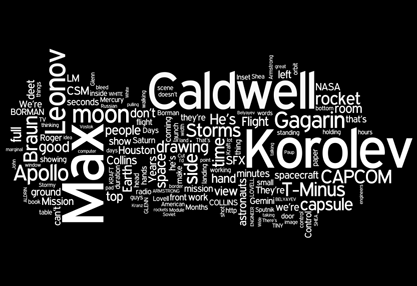So, enough with the NIH. Here’s the new book, super-condensed via Wordle:
 This constellation of words is a map of the script, so it’s all in there (except for the structural stuff like “Panel X” and “Page Y”).
This constellation of words is a map of the script, so it’s all in there (except for the structural stuff like “Panel X” and “Page Y”).
Now you have T-Minus and its director’s cut, all at once, with the main characters looming large! Think of all the time you’ve saved by not having to deal with messy details like story or plot. I’ve even spared you the pictures, so you don’t have to feel sad because the book you’re reading right now doesn’t feature art by Zander Cannon and Kevin Cannon.
But your next book will be chock full of Cannon and Cannon goodness, right?
Right!

